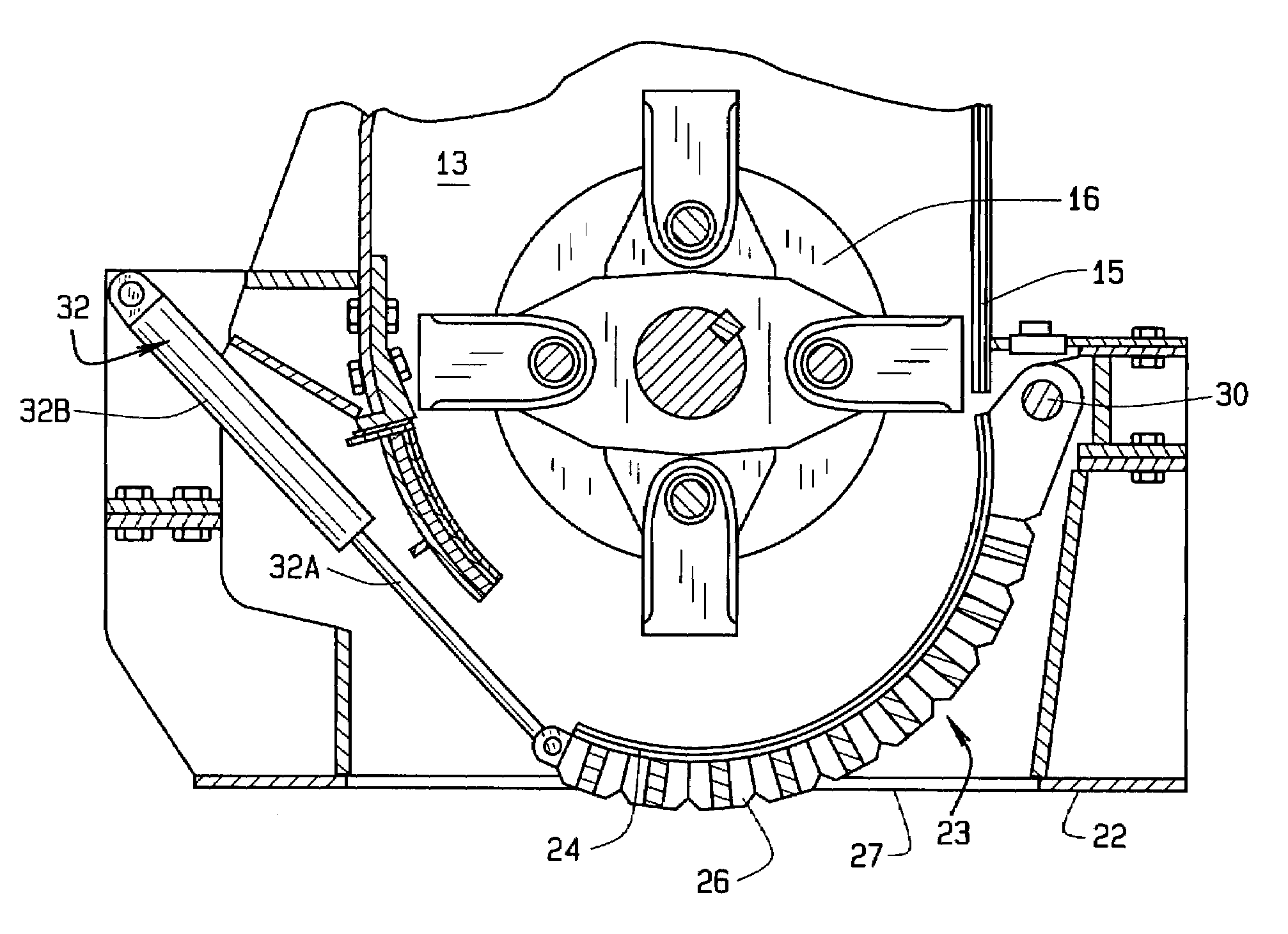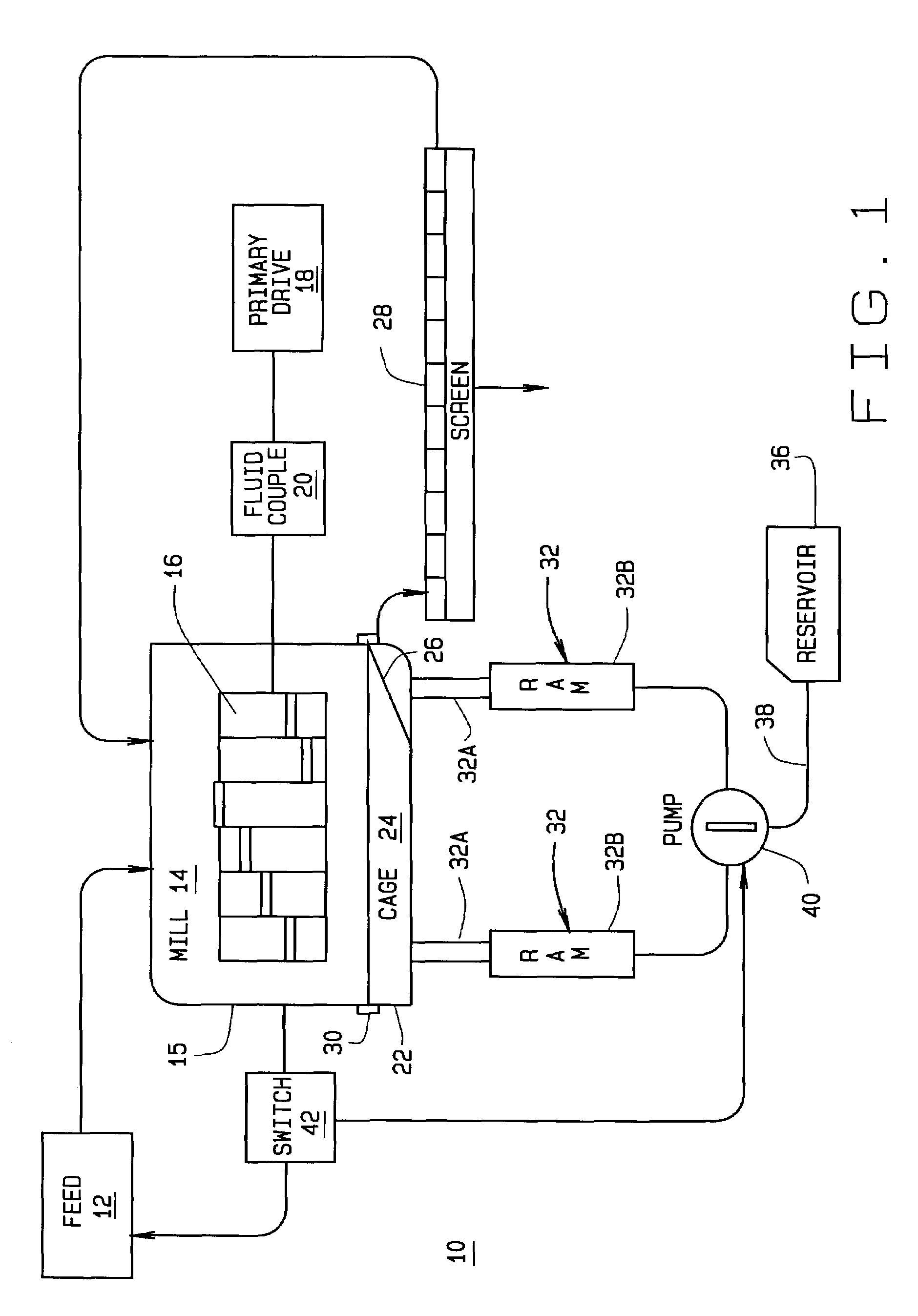Shredder with cage relief
a cage relief and shredder technology, applied in the direction of cocoa, sorting, solid separation, etc., can solve the problems of backlog, jamming of material in the mill, damage to the mill,
- Summary
- Abstract
- Description
- Claims
- Application Information
AI Technical Summary
Benefits of technology
Problems solved by technology
Method used
Image
Examples
first embodiment
[0025]In a first embodiment, show in FIG. 1, the arms hydraulic rams 32 are in the first operational position when each ram arm 32A is extended, exerting a pushing force on the pivoting cage 24 to maintain it in the closed and operational position. To maintain the first operational position, the hydraulic pump 40 provides hydraulic fluid from the reservoir 36 to each fluid cylinder 32B, through the hydraulic circuit 38. Upon receiving a signal from the speed sensor switch 42 or control system to release and open the pivoting cage 24, the hydraulic pump 40 is reversed, drawing fluid from each fluid cylinder 32B and returning it to the reservoir 36. Alternatively, hydraulic pump 40 is disengaged, and a fluid return bypass is opened, permitting fluid to drain from each fluid cylinder 32B back to the reservoir 36. As fluid is withdrawn or drained from each fluid cylinder 32B, each ram arm 32A retracts, drawing the pivoting cage 24 away from the rotor 16, and into an open position for di...
second embodiment
[0026]In a second embodiment, show in FIGS. 2 and 3, the arms hydraulic rams 32 are in the first operational position when each ram arm 32A is retracted, exerting a draw force on the pivoting cage 24 to maintain it in the closed and operational position. To maintain the first operational position, the hydraulic pump 40 draws hydraulic fluid from each fluid cylinder 32B, through the hydraulic circuit 38, and stores it in the reservoir 36. Upon receiving a signal from the speed sensor switch 42 or control system to release and open the pivoting cage 24, the hydraulic pump 40 is reversed, drawing fluid from the reservoir 32 and supplying hydraulic fluid under pressure to each fluid cylinder 32B. As the hydraulic fluid is pumped into each fluid cylinder 32B, the associated ram arms 32A extend, moving the pivoting cage 24 to an open configuration shown in FIG. 3 for the discharge of the trapped or jammed tramp material.
[0027]Those of ordinary skill in the art will recognize that the hydr...
PUM
 Login to View More
Login to View More Abstract
Description
Claims
Application Information
 Login to View More
Login to View More - R&D
- Intellectual Property
- Life Sciences
- Materials
- Tech Scout
- Unparalleled Data Quality
- Higher Quality Content
- 60% Fewer Hallucinations
Browse by: Latest US Patents, China's latest patents, Technical Efficacy Thesaurus, Application Domain, Technology Topic, Popular Technical Reports.
© 2025 PatSnap. All rights reserved.Legal|Privacy policy|Modern Slavery Act Transparency Statement|Sitemap|About US| Contact US: help@patsnap.com



